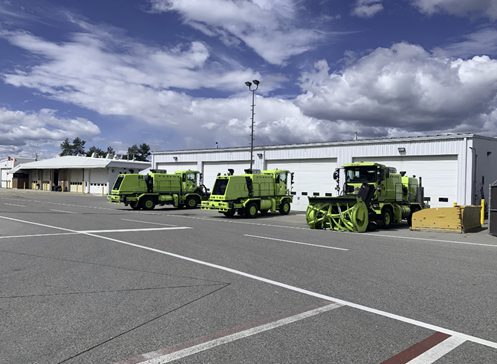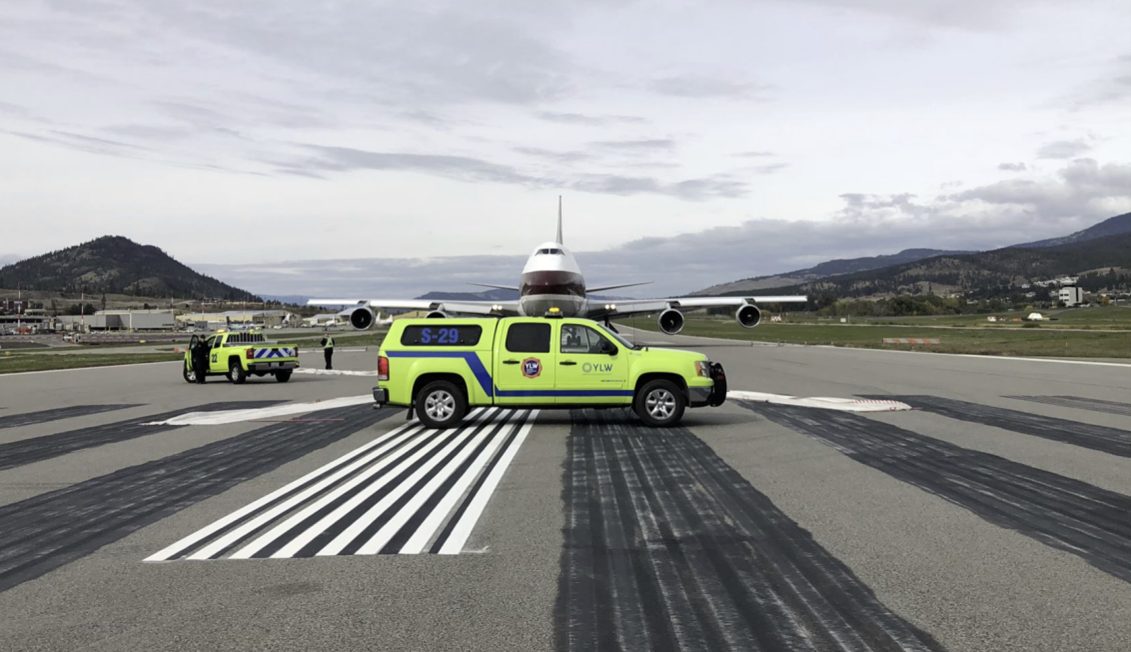Critical infrastructure projects to improve passengers’ experience
- Like
- Digg
- Del
- Tumblr
- VKontakte
- Buffer
- Love This
- Odnoklassniki
- Meneame
- Blogger
- Amazon
- Yahoo Mail
- Gmail
- AOL
- Newsvine
- HackerNews
- Evernote
- MySpace
- Mail.ru
- Viadeo
- Line
- Comments
- Yummly
- SMS
- Viber
- Telegram
- Subscribe
- Skype
- Facebook Messenger
- Kakao
- LiveJournal
- Yammer
- Edgar
- Fintel
- Mix
- Instapaper
- Copy Link
Posted: 18 April 2022 | Geoff Ritchie | 1 comment
Geoff Ritchie, Senior Manager, Airport Development of Kelowna International Airport, explains how the airport’s new funding for critical infrastructure projects will ensure that passenger expectations of safety and security, significantly impacted by the pandemic, will be achieved.


Credit: Kelowna International Airport (YLW)
Earlier this year (2022), Kelowna International Airport (YLW) received over $21 million in funding for key infrastructure projects and operational support required to maintain continued airport operations and essential air services. The funding, provided by the Government of Canada, specifically through the Airport Critical Infrastructure Programme, Airport Relief Fund and Regional Air Transportation Initiative, will allow YLW to update infrastructure and provide operational services to better serve passengers.
As passengers return to air travel following the COVID-19 pandemic, there will be a new level of customer expectations around the safety and security measures put in place by airports. These key projects will include addressing increased safety and security, while also improving operational efficiencies in areas such as passenger flow, frictionless travel, and environmental considerations; all of which have the ultimate impact of improving the passenger experience.
The aviation sector is essential for Canada’s post-pandemic recovery for revenue generation for local businesses, maintaining and creating jobs for residents, and encouraging investment in the local community. The Okanagan is a landlocked region, making air access even more important to aid in the movement of goods, while reducing the need for vehicles on roadways.
Combined Operations Building relocation


Credit: Kelowna International Airport (YLW)
The Combined Operations Building (COB) is critical to house all the staff and infrastructure required to provide emergency and maintenance services at YLW. The purpose of this project is to design, renovate and build the operations facilities in a phased manner that will match the airport’s projected human resource and fleet plans to the year 2045. The proposed development will encompass the existing facility and incorporate the adjacent cargo facility and the relocation of the Non-Passenger Screening-Vehicles (NPS-V) facility. The ultimate benefit will be the optimisation of efficiencies in both aircraft fire fighting and operational responses, to ensure safety standards are maintained by providing essential infrastructure for continued operations.
The Airport Operations Centre will be strategically located inside the new COB facility to also maximise visibility to airside surfaces, which will assist in providing efficient and timely response for operational purposes.
Airport terminal building roof replacement
Key projects will include addressing increased safety and security, while also improving operational efficiencies in areas such as passenger flow, frictionless travel, and environmental considerations; all of which have the ultimate impact of improving the passenger experience”
As critical airport infrastructure, the public, employees, and airport equipment at YLW are protected from the elements by the ATB roof. The roof stability and maintenance play a critical role in occupant safety. As most of the roof has reached the end of its useful life, YLW embarked upon a multi-year project to replace the existing ATB roof with a higher insulation value assembly thus making it more energy efficient and providing the additional benefit of reducing greenhouse gas emissions. This roof replacement will reduce interruptions in essential operations due to safety issues. The project demonstrates environmental leadership in the Okanagan and aligns with the federal government’s commitment to meet its net-zero emissions target by 2050, while enabling the airport to improve infrastructure resiliency, realise operational efficiencies and drive a more sustainable operation in the future.
Airport bio-security infrastructure


Credit: Kelowna International Airport (YLW)
Ultimately, this project will accelerate economic and physical recovery from the air travel restrictions associated with the COVID-19 pandemic”
The purpose of this project is to support investment in infrastructure to protect passengers and employees travelling through, and working, at Kelowna International Airport. The project will undertake infrastructure changes to allow for the establishment of testing and screening facilities, along with the necessary changes to facilitate flow, manage physical distancing, and implement the necessary tools and signage to inform passengers and employees of the details related to the facility. Technological initiatives will be employed to assist with passenger processing to optimise safety, security, and information flows. Ultimately, this project will accelerate economic and physical recovery from the air travel restrictions associated with the COVID-19 pandemic. The project will also allow for the ongoing ability to develop and build upon technologies to ensure preparedness for health screening for COVID-19 and future health threats.
Runway end safety area
The project will design and construct the Runway End Safety Area (RESA) at runways 16 and 34 in compliance with federal regulations. The Canadian Aviation Regulations require Canadian-certified aerodromes handling over 325,000 passengers per annum on scheduled commercial air carriers to extend their current runway end safety area to a minimum of 150m at either end of the runway to further improve the safety of the aerodromes.
Airfield lighting and support infrastructure
The airfield lighting system is a critical safety component of operating a safe and efficient airport. The purpose of this project is to complete an airfield lighting feasibility assessment and design for an upgrade to the current airfield lighting systems and supporting infrastructure for runways 16 and 34. In addition, as the project involves upgrades to LED lighting, some of the ancillary benefits include reduced energy consumption and greenhouse gases.
Biography


Most recently, he is leading Kelowna International Airport’s development in major building projects, Commercial Development, Business Development, Air Service Development, and Community Engagement.
Related topics
Airport construction and design, Airport development, Airside operations, COVID-19, Emissions, Funding and finance, Passenger experience and seamless travel, Safety, Security, Sustainability, Sustainable development, Terminal operations, Workforce



















Kelowna is a very beautiful and busy city and deserves the improvement. I had the opportunity to disembark and embark at Kelowna International Airport last January and was impressed with the good airport operation. Congrats Mr. Ritchie